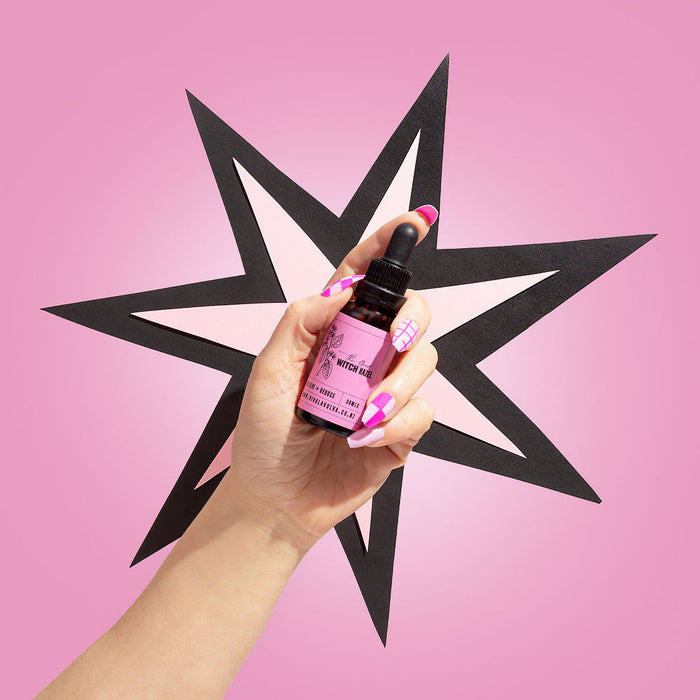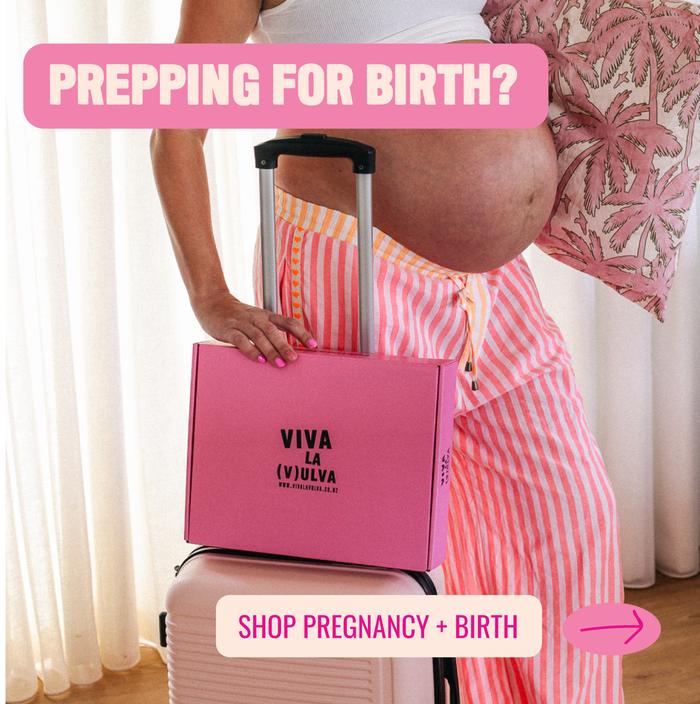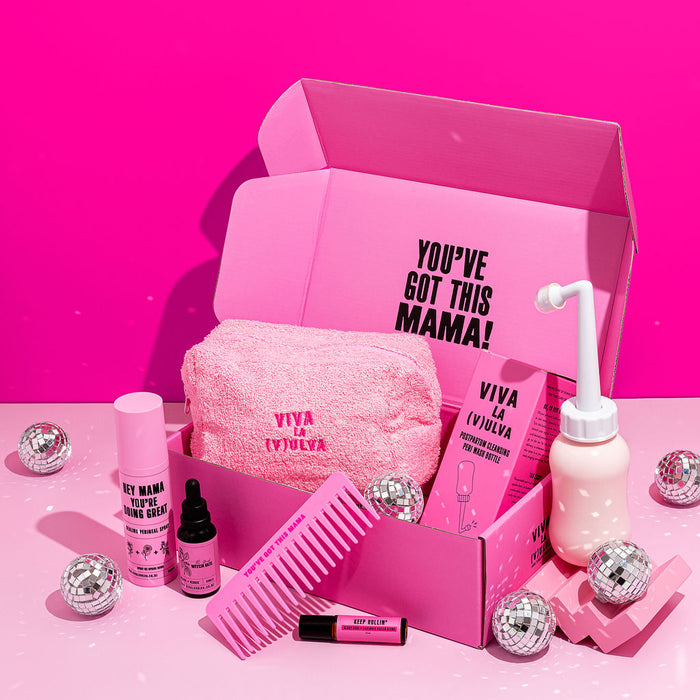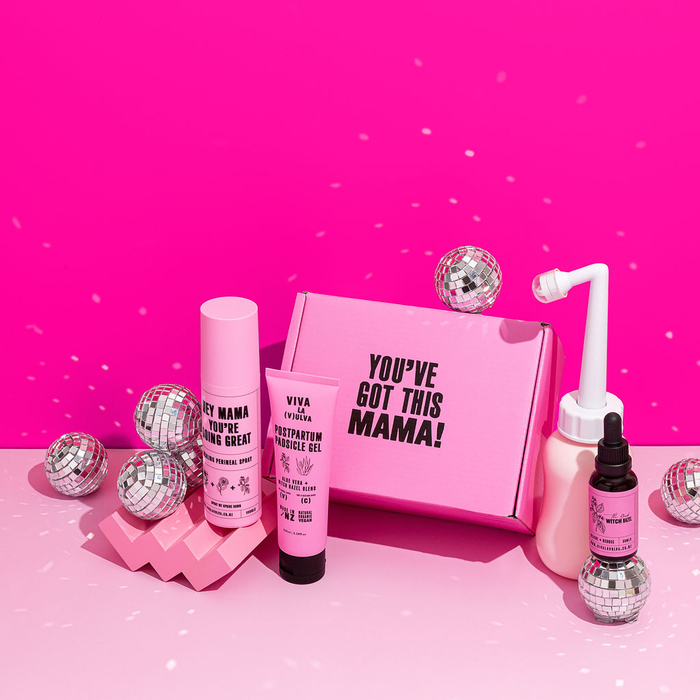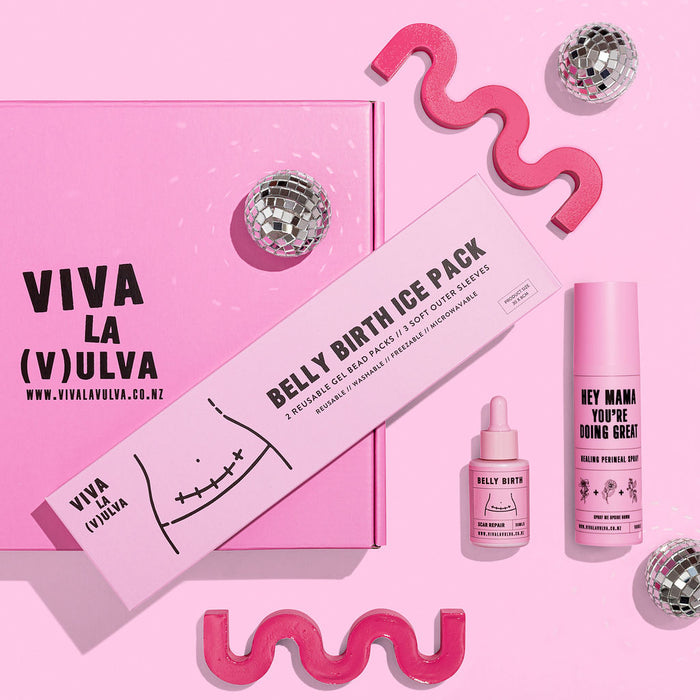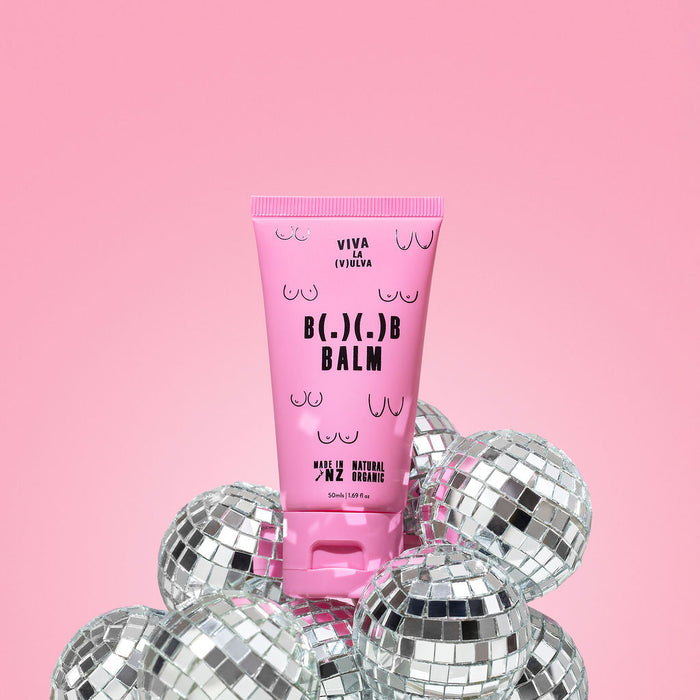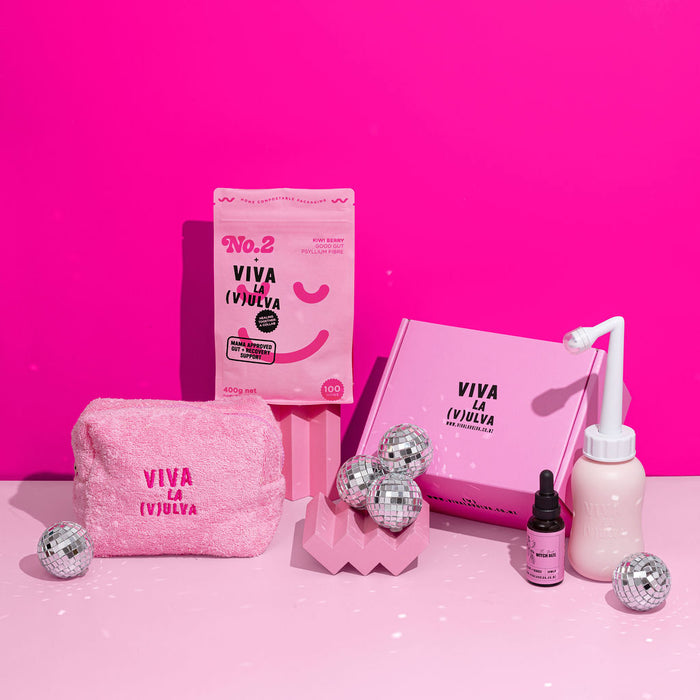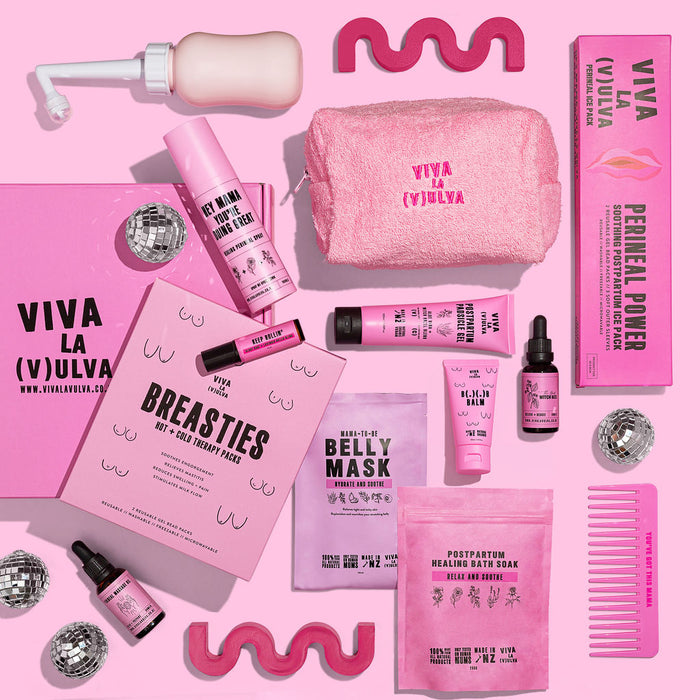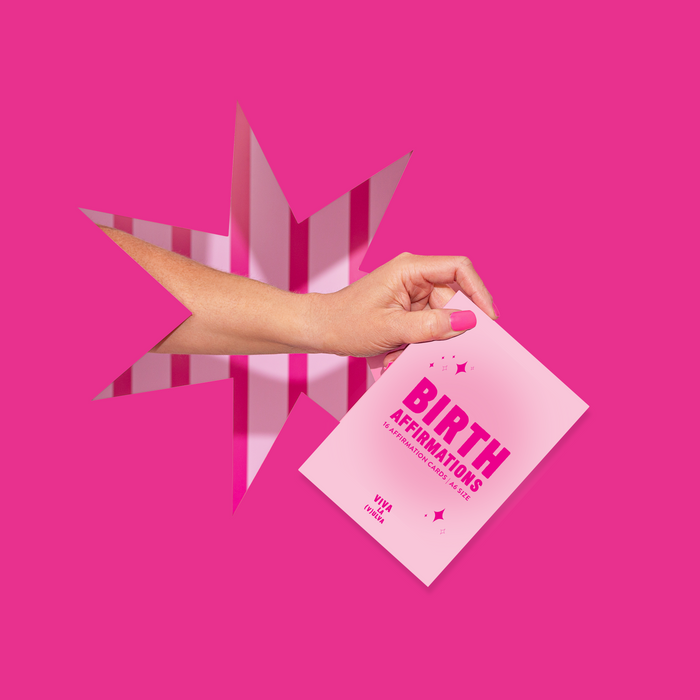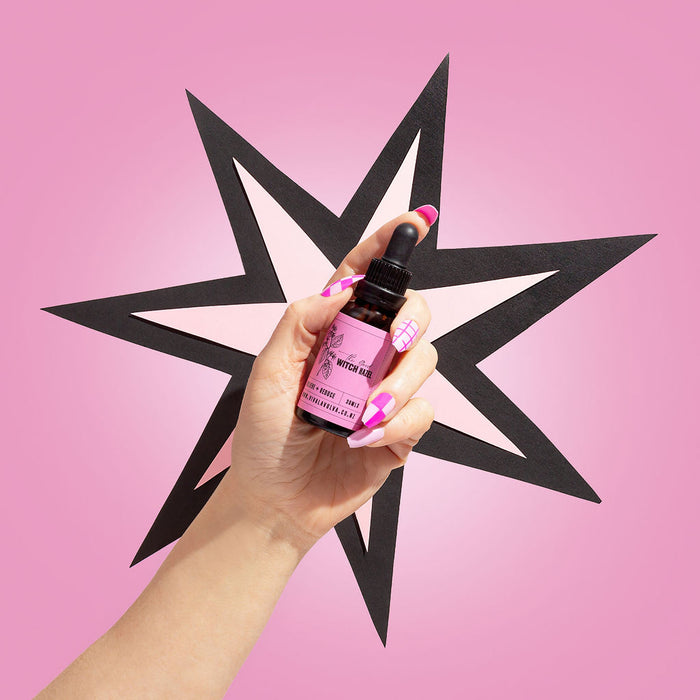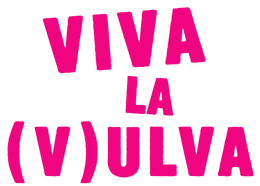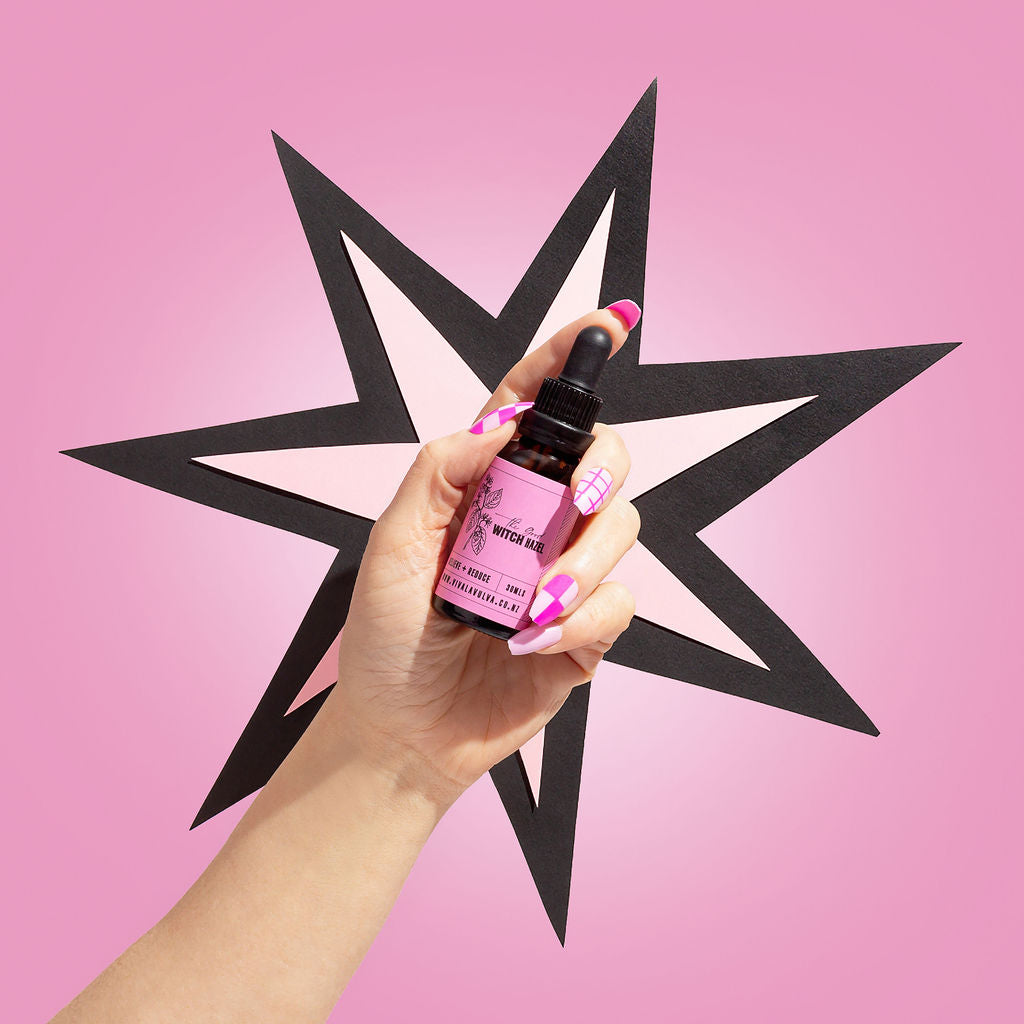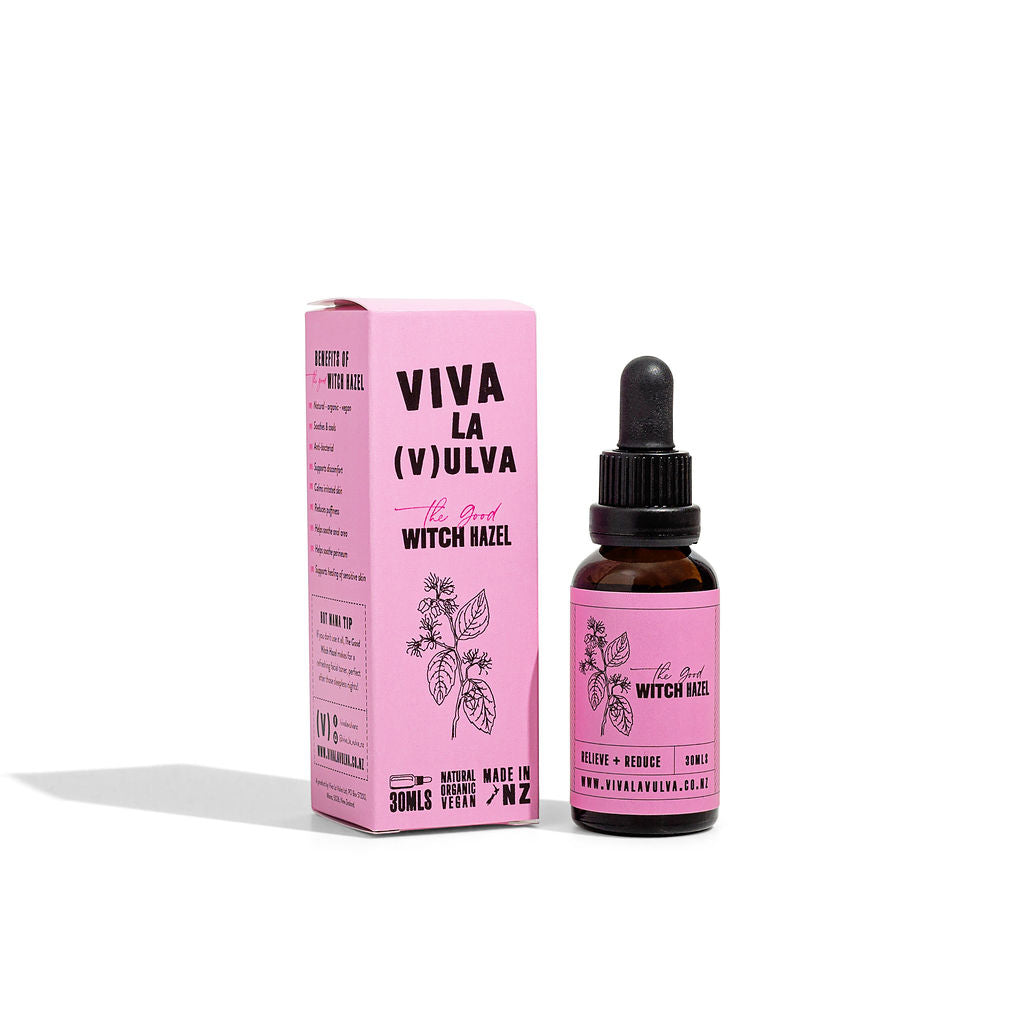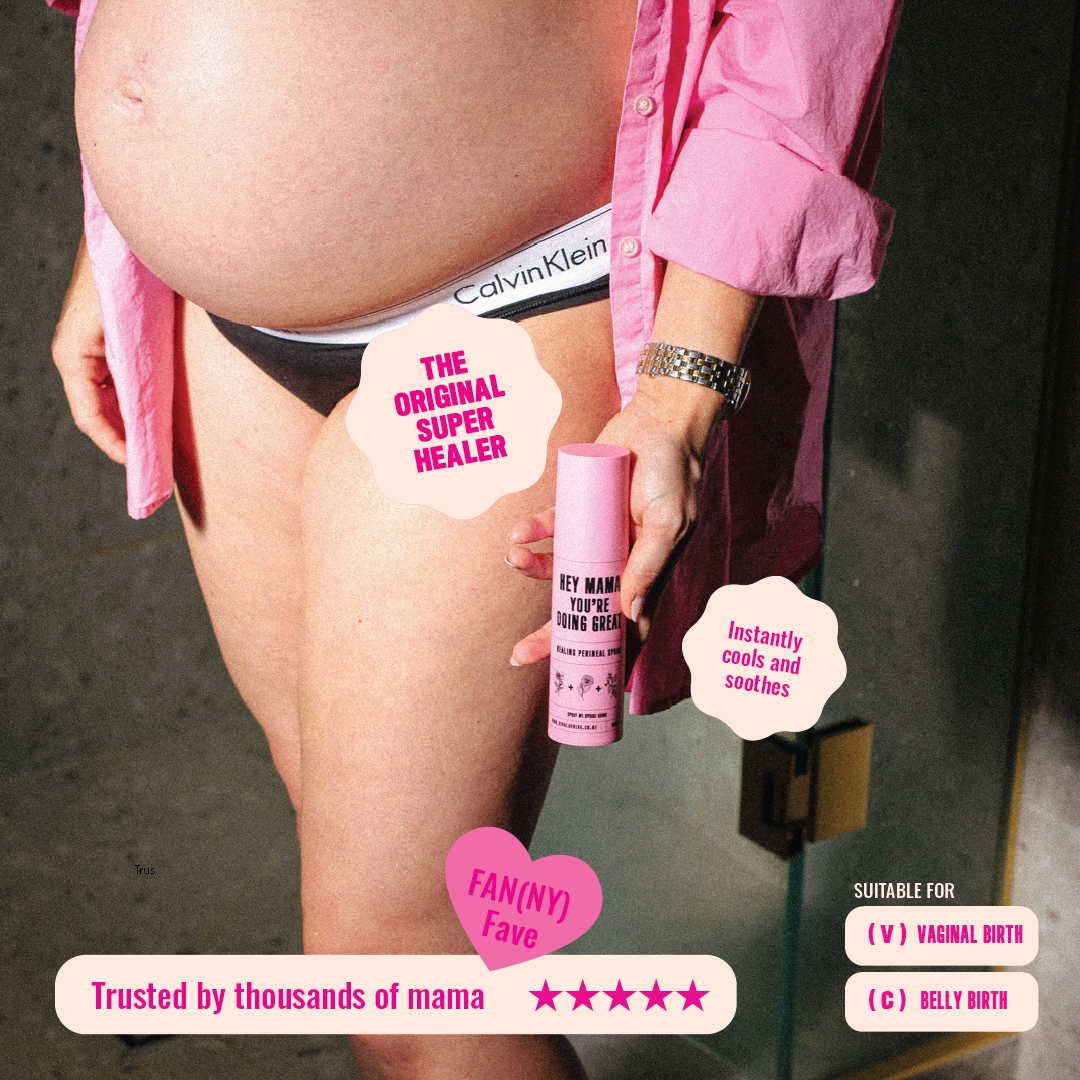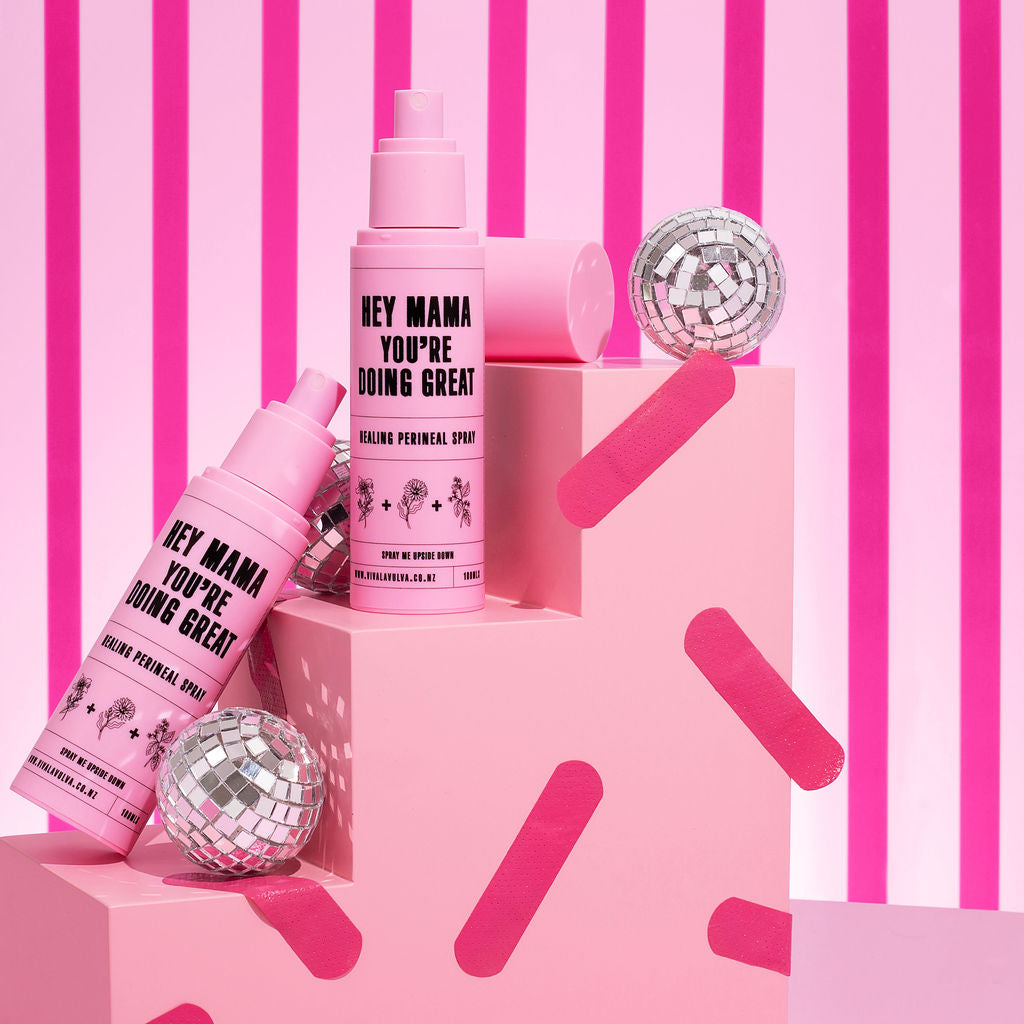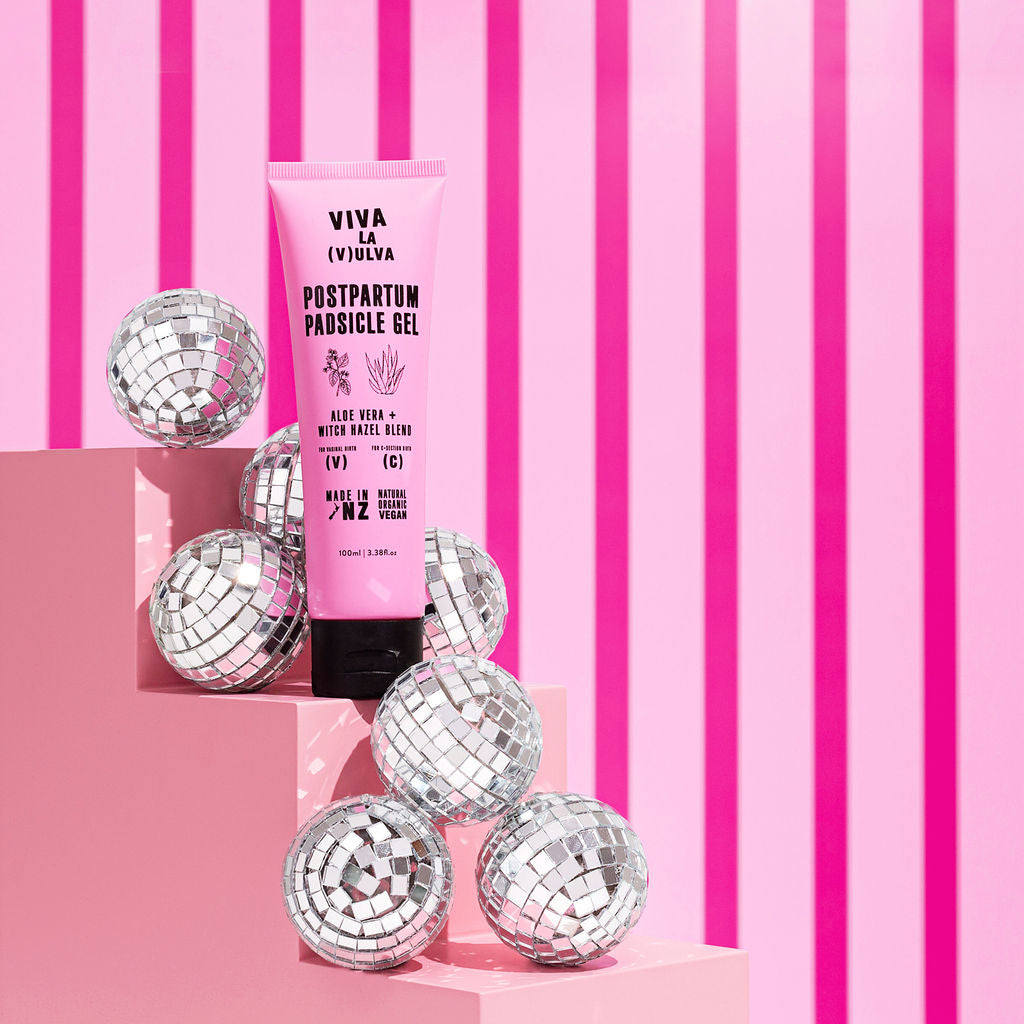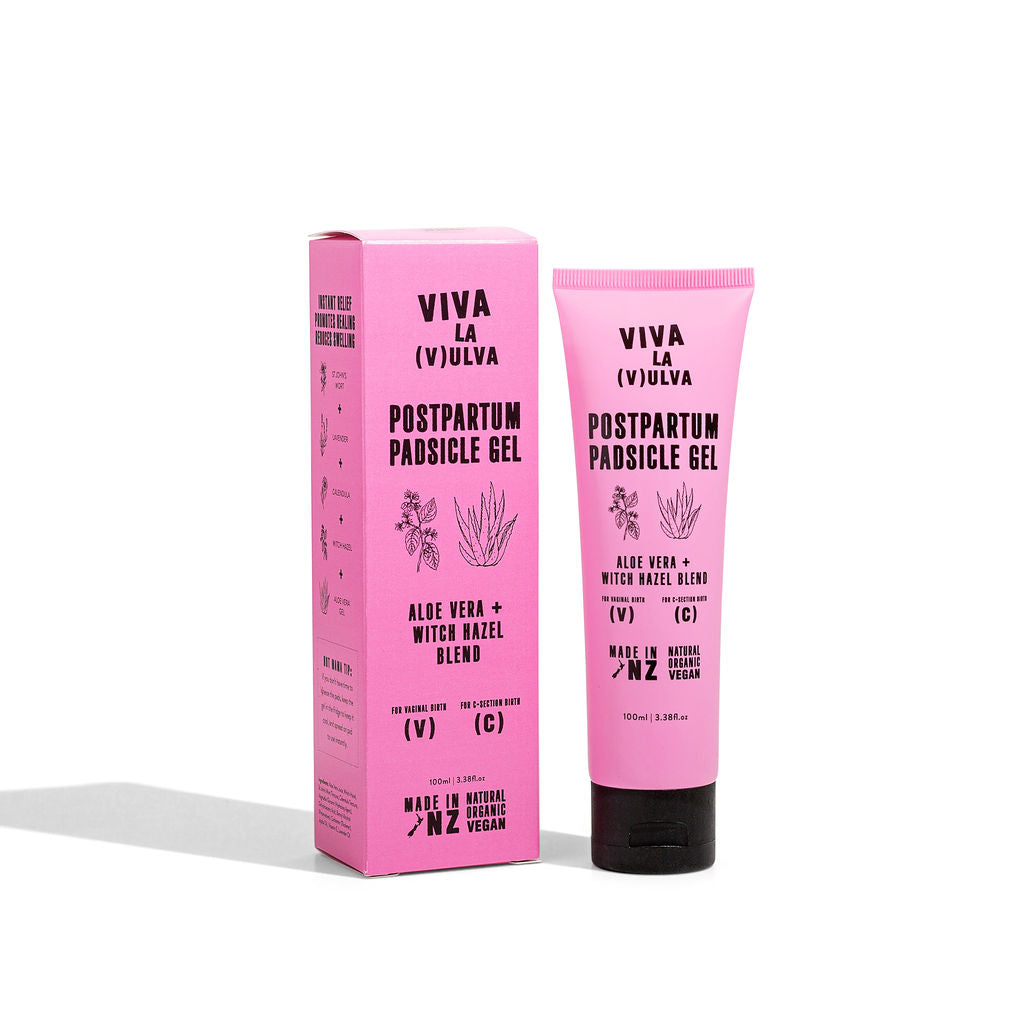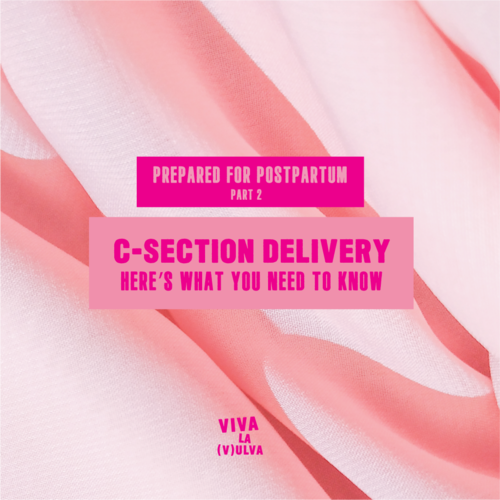
C-Section, Through The Sunroof - Here's What You Need To Know...
Hey mama! This is the second part of our Viva La Vulva prepared for postpartum series, we’re talking about C Section delivery and what to expect and how best to prepare to maximise your postpartum healing.
Viva La Vulva’s prepared for postpartum series offers real talk about what to expect, tips and tricks to help you navigate changes and ways to prepare for all things postpartum!
Having a baby is exciting, yes, and it’s also a huge adjustment. And at Viva La Vulva we believe an educated mama is an empowered mama! Just as all pregnancies and births are completely unique, all postpartum journeys are too. How you deliver your baby will affect the way you heal and recover. We want to make sure you go into the fourth trimester (and beyond) as prepared as you can be knowing exactly what to expect from your body in the weeks and months after birth.
While it’s totally necessary to educate yourself about pregnancy, labour and birth, preparing for postpartum is essential! You are giving your future self the best possible chance at healing comfortably and transitioning to motherhood gracefully.
Your body changes a lot after you give birth, changes that are physical and some emotional. In Part 2 of our preparing for postpartum series, we are serving up some real talk about C SECTION… We talk about what to expect, share tips and tricks to help you navigate these changes and offer ways to prepare for delivering your baby via cesarean section.
Can we just say thank you for being here. And now that you’re here let’s take a quick minute to recognise 👏🏼 you and your incredible 👏🏼 body! If you’re growing a baby(ies), if you’ve recently birthed, or if you're well into your postpartum recovery journey please acknowledge yourself, you are an incredible mama, honour what your body has achieved, honour your mind, and celebrate both, because at Viva La Vulva WE ARE!
*Disclaimer. Mamas, please know that this information is not intended to act as or replace any medical advice, if you have questions or you are concerned at any time ask your lead maternity carer (LMC).
In case you missed Part 1 of our Prepared for Postpartum series, we talked about Vaginal Delivery and what to expect, READ IT HERE.
BODY AFTER BABY AND WHAT TO EXPECT POSTPARTUM - AND WE’RE NOT TALKING ABOUT ‘BOUNCING BACK’
Let’s talk about some of the physical changes that you might experience in the weeks/months after giving birth, some ways to ease the discomfort and some postpartum essential items to have on hand to make it a little easier!
Your body is changing through pregnancy and birth. Growing a human, birthing that tiny human and healing… are all massive accomplishments! Mama, it is so important that you give yourself, and your miraculous body, the space and time to heal. And know it can take time to adjust to your body post-birth as things may look and feel a little different. Things may not go back to how they were before and that’s okay, please know it’s also okay to grieve your ‘pre-baby’ body. It’s all about nurturing your mind and nourishing your body at this time. Be kind to yourself, mama. Take your time, there is no rush!
C-SECTION DELIVERY, HOW TO RECOVER FROM MAJOR ABDOMINAL SURGERY
If you’ve had a Cesarean birth your body has been through a major surgery plus everything that comes with labour and birth! Mama, acknowledge the small wins and take your time, you got this! A c-section means you’ve had an incision through your abdomen muscle and uterus, and not only that but your body will also potentially be processing anaesthesia, antibiotics, a catheter and the pain relief medications needed to undergo such a surgery. While you may be super keen to start doing everything for your newborn, the physical recovery can take longer than it does after vaginal birth. You typically spend 3-4 days in the hospital. Day 2 to 7 is often the most painful and discomfort can last 4-8 weeks.
Additionally, you’ll feel really tired (from sleep deprivation and the operation) and the incision on your belly will likely be sore! You may also still have perineal pain, especially if you had assisted delivery and were delivering vaginally before going into surgery.
Often your care provider in hospital will want to make sure you are up and walking - walking is very beneficial for healing from this type of surgery - and have done your first poo in order for you to go home. A c-section surgery will leave a scar, over time it may fade but probably not completely. In some mamas these scars can become hypertrophic, where your body creates more scar tissue than needed. And remember mama your scar deserves to be celebrated its a physical reminder of how hard your body worked and what your body did to bring your baby into the world.
C-SECTION DELIVERY: TIPS & TRICKS
Ways to alleviate pain & look after your c-section incision
-
With c-section recovery, it's best to take it slow, as any strain can lead to a much longer recovery time. Using a pillow to hold your tummy can help with all the sitting and standing movements.
-
Wear loose-fitting comfortable clothing that doesn’t rub on your tummy.
-
Plan to only hold your baby(ies), and forgo lifting or carrying anything else - this means no shopping, no washing baskets, no baby capsules. Don’t lift anything from a squatting position. Avoid stretching movements ie. vacuuming or hanging up washing. And be careful getting up from lying or sitting positions. If you can mama, make sure to organise a bit of extra help at home during this time.
-
When breastfeeding, cuddling or comforting baby, place baby on a pillow over your tummy to protect the tender area. Get others to bring baby to you and say yes to as much help as possible.
-
Keep your wound clean, you can use Viva La Vulva Healing Spray after the bandage is removed to help with any stinging or pain. If you have a fever, are feeling a lot of pain or it’s red/oozy at the incision site, call your LMC ASAP as these can be signs of an infection and you may need medical attention.
-
Scar thickening and sensitivity - itching or pulling sensations, and numbness are common feelings to have around the scar. They should eventually pass, but in some cases may take a long time or never completely go away.
-
Once stitches are gone and the incision has healed, try a gentle massage with some nice massage oil, this can help the skin heal and decrease scar tissue build up.
-
Use Perineal Power soothing ice therapy packs on your perineum to help soothe it, although you may not have delivered vaginally your vulva still needs heaps of love! If it feels comfy to do so, a cooling pack on your tummy may be nice too, not straight on the skin, pop a towel between.
-
Other ways to alleviate perineal soreness; sitz baths with our healing bath salts, sitting on a pillow or a doughnut-shaped cushion, using peri wash bottle - wipe from front to back after going to the bathroom, lightly dab if sore.
-
Use The Good Witch Hazel if you've got those pesky haemorrhoids.
-
Ask your provider about pain medicine - it’s generally okay to take paracetamol.
-
Take stool softener to avoid constipation - kiwi crush is a goodie and eating a fibrous diet, prunes may help too.
IF YOU SUSTAINED TEARS BEFORE GOING INTO SURGERY HERE’S HOW TO LOOK AFTER YOUR TEARS/STITCHES
We’re here for the tears mama. Most first time births sustain some minor tears and grazing as your vagina stretches to make room for the baby's head to come through the vaginal opening. If you were delivering vaginally, and/or without the use of ventouse and forceps, prior to your c-section, it’s possible you may have sustained tears and/or needed stitches. There are different degrees of tearing, minor tears often heal quickly on their own, but for 2nd, 3rd, 4th-degree tears, stitches are needed to help with the healing process.
The different types of perineal tears are:
-
First-degree - small tears that only affect the skin, usually healing quickly and without treatment.
-
Second-degree - Tears that affect the muscle of the perineum and skin, usually require a few stitches.
-
Third-degree and fourth-degree tears are deeper and extend into the muscle that controls the anus, these types of tears will need repair in an operating theatre - with appropriate pain relief of course!
TIPS ON HOW TO LOOK AFTER YOUR STITCHES (BOTH C-SECTION AND VAGINAL STITCHES):
-
Practice good hygiene;
For c-section stitches - keep the wound area clean. You don’t need to scrub it, wash with mild soap and water. Even letting water run over the area in the shower once the bandage has come off is enough to clean it. Once clean, air dry or pat area dry with a clean towel. Check with your LMC when the best time is to take your bandage off.
For vaginal stitches - it’s important to keep the area clean to avoid infections - use a peri wash bottle, sitz baths, shower when you can, wiping always from front to back and wash hands regularly.
-
Use our Hypercal healing spray to minimise healing times!, instant soothing relief and also helps keep the area clean.
-
Your perineal area can still be sore after a c-section birth. Use our Perineal Power soothing ice therapy packs on your perineum to help with swelling and soreness, pop outside of your pad/underwear. If cold therapy feels good on the wound area, place a clean cloth/towel in between the cold pack and your skin.
-
Getting some fresh air can help aid the healing process, let the c-section wound be in the open air once the bandage has come off and/or lie down without undies on for 10 mins once or twice a day to get air to circulate perineal stitches.
-
Don’t strain to poo, if you are constipated try stool softeners or other natural remedies (you could try kiwi crush, prunes, healthy fibrous diet).
-
It’s recommended to avoid sex until at least 6 weeks postpartum.
-
Avoid any strenuous activities and get lots of rest!
YOUR UTERUS TAKES ABOUT SIX WEEKS TO RETURN TO PRE-PREGNANCY SIZE
Within minutes of giving birth, your uterus (which grew to the size of a large watermelon in just 40 weeks) just wow, is already starting the process of contracting back down to its pre-pregnancy size and your organs are returning to their original places, all of this taking only 6 to 8 weeks. Not surprisingly, this process can cause cramping pains in your lower belly (called afterpains). Hormones released if breastfeeding, can help the contracting process along but can also cause more cramping. These can be dull or sharp pains. The good news afterpains usually only last up to a week for most women. They can go unnoticed by some and be really sore for others. Take paracetamol for this if you need to.
WE BLEED AFTER BIRTH FOR UP TO 6 WEEKS… THIS IS CALLED LOCHIA!
Following birth, it's normal to bleed as the wall of your uterus heals (there are open blood vessels where your placenta came away). You are healing a massive wound inside your uterus, it is so important to avoid being too energetic and instead just REST, mama, rest as much as you can!
Lochia is a mixture of blood, tissues and the lining of the uterus coming away.
-
The bleeding is bright red (called rubra, lasting 2-5 days) and like a very heavy period at first.
-
You may need to change a maternity pad every few hours for the first 24-48 hours.
-
Some women get blood clots - no larger than a plum is normal, but always best to check with your LMC as large clots can be cause for concern.
-
Gradually the bleeding will lessen and become a pinky, rusty red or brownish colour (called serosa, lasting 5-10 days), and eventually turn white, yellowish or clear (called alba) until it stops.
Use comfortable pads, your peri wash bottle, shower, and change pads regularly to keep it clean down there. It’s best to avoid tampons, menstrual cups or inserting anything inside the vagina - this helps to avoid infection and vaginal tissues can feel sensitive as they are healing. Losing blood during birth and afterwards can make you extremely tired, so take it easy and be kind to yourself! If you start gushing blood in the days and weeks following birth (ie. filling 1-2 pads in 30-60mins or more) this is serious, call the emergency and your LMC. It could be a secondary haemorrhage, not super common, but pays to know what to look out for.
SEX AFTER C-SECTION
We interviewed Morgan Penn - Somatic Sexologist on ways to reconnect with your body after birth. If you want the down-low on sex after birth we asked her things like... When “should” I be ready to have sex again? What will it feel like? I’m a bit scared, will it hurt? What positions might be best to start? Where did my libido go? How do I connect with my partner in the midst of everything that is already going on? Then definitely check out this interview.
Postpartum healing can be a bid adjustment mama. Having this info up your sleeve is especially important when you might be functioning on little to no sleep, caring for your newborn, leaking here and there and everywhere, managing pain and healing. We get it! Remember our pregnant/postpartum bodies are working hard for us, doing an incredibly important job and deserve to be celebrated, tiger stripes, wiggly bits and all! At the end of the day, it’s about celebrating the wins, acknowledging the unpredictable nature of childbirth, acknowledging what comes after and celebrating our bodies and our unique journeys to motherhood. These experiences are ours.
We are so glad you’re here because being aware of and prepared for what happens postpartum can seriously help alleviate feelings of overwhelm, stress, anxiety and empower you with the tools/knowledge to care for yourself. MAMA, you have got whatever postpartum throws your way.

IN CASE YOU MISSED PART 1 - PREPARED FOR POSTPARTUM, VAGINAL DELIVERY, HERE’S WHAT YOU NEED TO KNOW!
Next up in Viva La Vulva’s preparing for postpartum series, we’ll be putting a spotlight on Pelvic Floor and Prolapse. Stay tuned.
Viva La Vulva’s prepared for postpartum series offers real talk about what to expect, tips and tricks to help you navigate changes and ways to prepare for all things postpartum!
xx VLV
*Checkups with your LMC are super important. Many discomforts and body changes are normal but new mums can be at risk of serious health complications in the days and weeks after birth. If anything doesn’t feel quite right, always, always ask. There are no stupid questions when it comes to your health.
SOURCES:
-
Real mamas sharing real postpartum experiences.
-
Fray, Kathy. Oh Baby, A NZ guide, Birth, Babies, Motherhood uncensored, 2016.
-
Schiedel, Bonnie. “17 mind-blowing ways your body changes after giving birth.” Today's Parent. May 9, 2018.
-
De Bellefonds, Colleen. “Postpartum Recovery Timeline.” What to expect. Medically Reviewed by Mark Payson, M.D. March 10, 2021.
-
Langdon, Kimberly M.D. OB/GYN. “How to care for a c-section incision.” MamaMend October 15, 2019.
